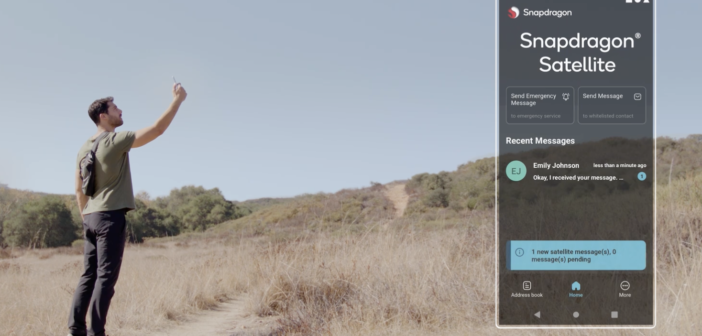The past decade has allowed us to witness great technological leaps with regards to smartphone technology, ignoring the boundaries and stumbling blocks that otherwise would have greatly hindered such hardware – advancements such as foldable devices, powerful cameras, and processing power (to name a few) are now possible on a small and portable smart device.
With that being said, it looks like satellite communication technology is the next big thing, with several big names each developing their own approach towards enabling two-way calls using satellites. In relation to this, Qualcomm has revealed that it has been working with several smartphone OEMs towards the development and refinement of this new feature. The company made its announcement during the Mobile World Congress (MWC) 2023 in Barcelona.
Known more commonly for its Snapdragon range of mobile phone processors, Qualcomm stated that it has partnered with Honor, Motorola, Nothing, OPPO, Vivo and Xiaomi to develop smartphones with satellite communication capabilities, which will make use of the Snapdragon Satellite.
Announced back at the Consumer Electronics Showcase in Las Vegas, the Snapdragon Satellite allows for satellite-based two-way messaging for smartphones. This includes different use cases including emergencies, SMS texting, and other messaging applications. Qualcomm says that it’s supported by the low-Earth orbiting (LEO) and fully operational Iridium satellite constellation, which enables low-power, low-latency satellite connections utilizing weather-resilient L-band spectrum. According to Francesco Grilli, Vice President of Product Management at Qualcomm:
“Our long-standing relationships with Honor, Motorola, Nothing, OPPO, vivo and Xiaomi are rooted in innovations and delivering exceptional connectivity experiences to consumers. By incorporating Snapdragon Satellite into next-generation devices, our partners will be able to offer satellite messaging capabilities thanks to a mature and commercially available global LEO constellation, which can allow subscribers around the world to communicate outdoors with emergency service providers, as well as family and friends.”
The Snapdragon Satellite will be available across all upcoming 5G Modem-RF systems and Snapdragon Mobile Platform tiers (from 8- to 4- tier) as the ecosystem matures. Qualcomm adds that the Snapdragon Satellite is set to expand to other device categories in compute, automotive and IoT market segments. As the ecosystem grows, OEMs and app developers will be able to differentiate and offer unique branded services taking advantage of satellite connectivity.
There are certain caveats, however. For example, this technology will require an open view of the sky, which is completely understandable given the context of the hardware in question.
This announcement from Qualcomm is one of several at MWC. More recently, new product reveals from Xiaomi and HONOR made headlines, as the two smartphone brands revealed their new line of flagship smartphones, in addition to announcements regarding global availability. The new Xiaomi 13 series and HONOR Magic series devices will soon make their way to markets across the globe, and you can check them out here and here.
Going back to this announcement from Qualcomm, the Snapdragon Satellite is planned to support 5G Non-Terrestrial Networks (NTN), as NTN satellite infrastructure and constellations become available.




